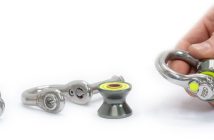POST-LOSS GOALS, OBJECTIVES, AND ACTIVITIES
There are really only two primary post-loss activities, the “response” to the loss: 1) emergency medical care for an injured person, or the appropriate response to another type of loss, e.g. property damage or destruction, reputational loss, financial loss, etc.; and 2) the documentation of the loss, through an incident investigation.
Response to the Loss
It’s imperative to develop and implement an effective means to respond to any type of loss incident or injury. The form of this response and how it is accomplished usually depends on a variety of factors, including:
• the volume of business
• the risk of injury or loss, and the level of severity and frequency
• the types and levels of injury prevention controls employed
• how effective these controls have proved to be
• how remote the location is
• the response time of local fire and/or EMS departments.
Based on these factors, you may elect to develop an emergency action plan that relies primarily on resources from outside the organization, or an internal emergency action plan that includes an in-house response through the provision of equipment, resources, and regular staff training.
Incident Investigation
Make a thorough investigation as soon as it is reasonably possible following any type of injury, or alleged injury. There are four primary components:
• forms and documents—both pre- and post-loss
• statements— from the injured, if able; from family/friends, even if not witnesses; from independent witnesses; and from employees
• diagrams—of the area surrounding the incident, with all dimensional, height and slope values identified of both premises and equipment
• photos—of the general area, of the view of the incident locus from the perspective of the injured participant, and of any specific visual evidence
While the details of incident investigation could fill volumes, there are three overarching concepts to keep in mind.
First, develop specific investigative forms and documents that assist the investigator and/or other employees in their efforts to adequately and appropriately obtain all relevant information.
Second, understand that plaintiffs in a lawsuit will likely have access to your investigation materials. It is a good rule of thumb to assume all investigation work product may be discoverable, especially if it cannot be replicated by the plaintiff after the fact.
Third, be as objective as possible. This is a fact-finding, not a fault-finding, exercise. It is the task of the investigator to accurately, thoroughly, and completely investigate an incident, and to memorialize the product of that investigation in case it is needed at some point in the future. It is not within the purview of the investigator to attribute fault or blame to the respective parties as a result of performing the investigation. That task should be left to insurance adjusters, defense attorneys, and the courts.
You, the operator, have the unique ability to perform an investigation immediately following an incident; a potential plaintiff is rarely in a position to do so. Since the investigation is typically performed by someone within the organization, subjective information will likely be seen as biased, and dismissed or not admitted in court.
The broad concepts outlined here provide a road map to follow when making an initial determination as to whether you have identified, considered and attempted to influence, through risk mitigation techniques and controls, those primary sources or exposures to loss and injury. We have not addressed other relevant issues, such as historical loss data analysis, predictive analytics/ predictive modeling, the pros and cons of using helmets and/or full body harnesses, or attempts to reduce the opportunity for human error (of either participants or employees). But by understanding the overall risk management universe and performing an audit and analysis of current operations, you can identify steps that will mitigate and eliminate exposures to loss associated with your operations.






